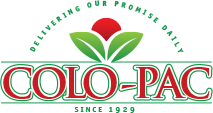
The humble head cabbage is a member of the cole family, a plant family made up of leafy green vegetables. Cabbage is a close relative to kale, Brussel sprouts and broccoli. Green and red cabbage form tight heads of smooth, thick leaves. Savoy cabbage has crimpled leaves that do not grow as tightly as the leaves of green and red cabbage. Savoy is usually dark green. Green cabbage can range from light green—almost white—to dark green. Red cabbage is sometimes known as purple cabbage, as its color can be various shades of red and purple. The color of cabbage is determined by the acidity of the soil it grows in. Chemical extracts of cabbage can be used to test the acidity of certain liquids, because the color of the solution will change depending on its pH level. Cabbage is a staple food item all around the world, from Asia to North America. There are several specialty varieties of cabbage that are usually regional, such as Dutch cabbage, which is white, and bok choy, a Chinese variety of cabbage that is green and leafy. Napa cabbage is another variety of Chinese cabbage which grows long, rough leaves that form a loose head. In its various forms, cabbage has been used around the world for millennia, and was domesticated since prehistory. Certain forms of cabbage were known well to the ancient Greeks and Romans, although it is hard to tell whether their cabbage was similar to the types we use today. In the middle ages, head cabbage was central to the European diet along with onions, turnips and other filling and easy-to-store vegetables. Our word for cabbage comes from the Old French coboche, which in turn comes from the diminutive of the Latin word for head, caput. This means that caboche, literally translates to “little head.” Comparing cabbage to the heads of people has been done for centuries, and is a common insult. The Old English word for cabbage was cawel, and while cabbage replaced cawel, we still use this word in the form of cole and kale. Today, cabbage is widely used. The highest consumer of cabbage is Russia, where people eat forty-four pounds of cabbage per year on average. Compare that to the US where we only eat about eight pounds of cabbage per year on average.
Cabbage is commonly used raw, cooked, pickled or fermented. Sauerkraut is the popular German version of pickled cabbage, made with a variety of spices. Kimchi is a spicy fermented cabbage that is a popular side dish in Korea. Common cooking methods for cabbage are steaming, boiling and stewing. Cooked cabbage dressed simply with vinegar is a common side dish, and is often associated with British, Irish and German cuisines. Galupki, sometimes called halupki or galumpki is a Polish dish that is made by stuffing rolls of cabbage with ground meats and rice. It is usually topped with a tomato based sauce and served with mashed potatoes. One of the most common uses for raw cabbage is coleslaw. Coleslaw is easy to make and works as a side dish for nearly any meal, and as a topping for sandwiches and burgers. Making coleslaw is simple; begin by thinly slicing cabbage into ribbons. Add mayo, apple cider vinegar, salt and pepper and combine until thoroughly mixed. Chill in the refrigerator for at least an hour to let the flavors develop. Serve as a side dish for nearly any meal, or add it to a barbeque pulled pork sandwich to add a bit of zest and crunch.
Pick cabbages that are smooth to the touch and that feel heavy for their size. They should be moist, but not wet and slimy. A fresh cabbage is firm to the touch and will feel crisp but flexible. Do not use cabbages that are either slimy or dry. Store cabbages wrapped in plastic. They will last for about two weeks in the refrigerator, savoy cabbages will only last about a week. When cooking cabbage, be careful to not overcook them. Cooking for too long makes the cabbage foul smelling and unpalatable.


 BACK TO PRODUCTS
BACK TO PRODUCTS